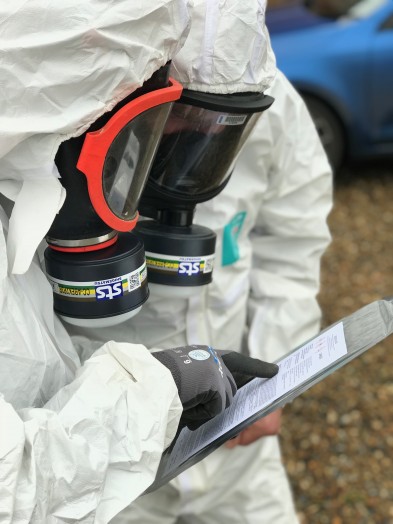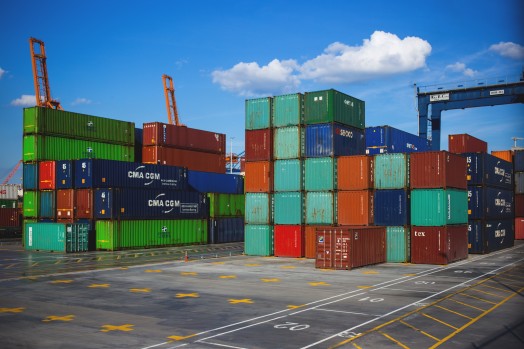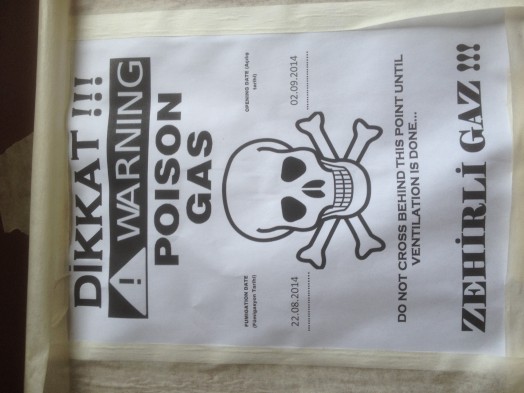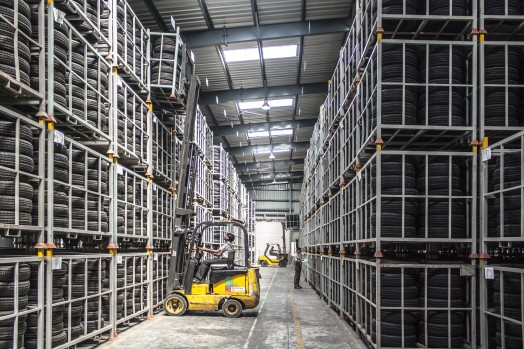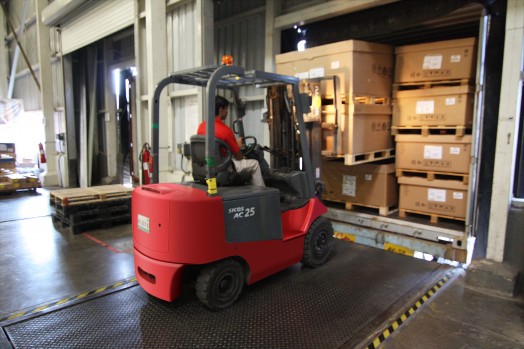There can be dangerous gasses inside shipping containers- here's how to get rid of fumigants gas in imports
Saturday 8th June 2019
Here at Dealey, we have some very highly trained fumigators working together to make sure we keep our standards high, swap useful knowledge and get the details of industry changes out to members.
There have been some massive changes in the pest control industry recently, and fumigation hasn’t been immune. The changes to our sector have been fundamental, and it turns out we are a fairly resilient bunch!
Ofqual told us to rewrite the entirety of our fumigation qualification; we rewrote it.
The HSE told us the entire fumigation sector had to retrain. We’ve had the entire sector retrain.
We have had our primary products undergo major label changes by the CRD, which has led to some big changes in the way we use it, and yet fumigation companies continue to flourish.
The latest change has come from BAuA in Germany BaUa Website. That’s the Bundesanstalt für Arbeitsschutz und Arbeitsmedizin, which of course you know means The Federal Institute of Occupational Safety and Health. Basically, it’s the German version of the HSE. BAuA have declared that the new safe level for phosphine exposure is 0.01ppm (0.01 parts per million parts of air). That’s TEN TIMES lower than it used to be.
Let me take a moment to explain why this matters:
Often, merchants or processors in the UK will need to source commodities from abroad. This can be in the form of some plant material. Maybe woven baskets, bags of beans, cotton bales or even straw hats. But what is just fetching headwear to you and me, is a delicious captive feast for certain insects.
Yes, cargo can be transported from country to country with more ease than ever, but it can pick up unwanted travellers on the way in the form of midges, beetles, weevils, bugs, flies, caterpillars, mite and nematodes. Different countries have different attitudes to the risk that these pests pose, from the fairly relaxed to the downright paranoid. Notifiable quarantine pest for import into the UK
In the UK we are, rightly or wrongly, on the relaxed end of the spectrum. We have a cool, damp climate; a lot of pests can’t thrive here. That being said, there are currently more than 950 risk registered pests that might be imported from abroad. Out of these, there are 30 that would pose a serious risk to our country’s plant health. (Department for Environment, Food & Rural Affairs- UK Plant Health Risk Register)
Making stuff safe for import before it gets here is what fumigators do. They fill the shipping containers with toxic gas to make sure the pests are dead. Sometimes, however, exporters will save on costs and send the containers to the UK with fumigation still going on while they are being shipped. It’s called in-transit fumigation, and it is globally widespread.
It is estimated that 9% of the shipping containers imported into the UK are “under gas.” With 10 million containers passing through UK ports, that’s a lot of fumigation! (DfT UK Port Freight Statistics 2016)
None of this presents a problem, so long as everyone involved in the shipping of the containers has been notified, the containers have been labelled as toxic, and there is a qualified professional there to deal with the fumigant at the other end.
But it does cost money to do this notification so (you’ve guessed it!) a lot of the time fumigated containers are imported with no one knowing about the toxic gas in the cargo.
This leads to lots of bad problems: in 2010 at Belfast, 14 dock workers were hospitalised following fumigant gas exposure. In 2013 six warehouse operatives were hospitalised in Rotterdam after being exposed to fumigant gasses while unloading containers. In Antwerp last year a cargo inspector was reported killed trying to transport “deactivated” residues away from the harbour.
And it’s not just the big accidents that are the issue. Low levels of fumigants over a long period of time (like Billy the Fork Lift Driver might get) can cause cancers, brittle bones, anaemia, lung and gastrointestinal disorders.
So, if you are importing containers of raw materials or even finished products, ask your supplier “Are your containers fumigated?” “Are you sure?” “Should we be gas checking them?”
“Hang on,” you say, “You’ve just told me this stuff causes cancers, there’s no bloody way I’m going in there!”
We will be delighted to do the work for you. You can keep your workers safe, look good and sleep well at night.
Our fumigators, who do the job every day, have some pretty fancy kit to detect toxic gasses. And, remember, these gasses are now considered toxic right down to 0.01 ppm.
If you are considering doing this on your own, you must be trained. Level 3 Award in Safe Use of Fumigants for the Management of Invertebrate Pests -Unit 2 is what you need. The BPCA does provide this qualification; it’s a good one.
If you don’t have this qualification and something goes wrong, and someone makes a claim, you are somewhere up a creek without a canoe, let alone a paddle. We have recently seen a competitor in court who literally got out of jail (not free) in part because of his staff being under-trained. Make sure your training is up to spec or run the risk of dire consequences!
There is also the risk of the fumigant residues to consider. These likely have not completely reacted, so there is always some toxic gas evolution still to come. This means the residues must be transported safely and disposed of legally. Fumigators have specialised quenching tanks to deactivate these residues, and there is also the grand old cost of getting rid of the resulting metal hydroxides and various other goodies that result.
And, oh good lord, as if it wasn’t complicated enough already all fumigant waste must be disposed of as hazardous waste under the code “EW 06 03 wastes from the MFSU of salts and their solutions and metallic oxides.”
So, there’s a lot to consider when discussing container imports, but here are the takeaways:
- The safe level for phosphine gas has been lowered to 0.01ppm.
- If you want to detect to this level, you need some pretty fancy kit to be sure the container is safe for entry.
- If you import anything, ask your supplier if it has been fumigated (if it contains organic material, it likely is)
- Make sure you are getting rid of the fumigant legally using a trained professional.
Remember that Billy, the forklift driver is at risk if you don’t ask these questions.
Awareness is key. If we can’t make importers aware of the practice of in-transit fumigation, they may not even know the risks, and there is no way to keep their workers safe.
Stay safe.

